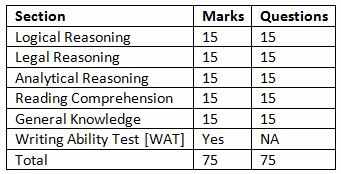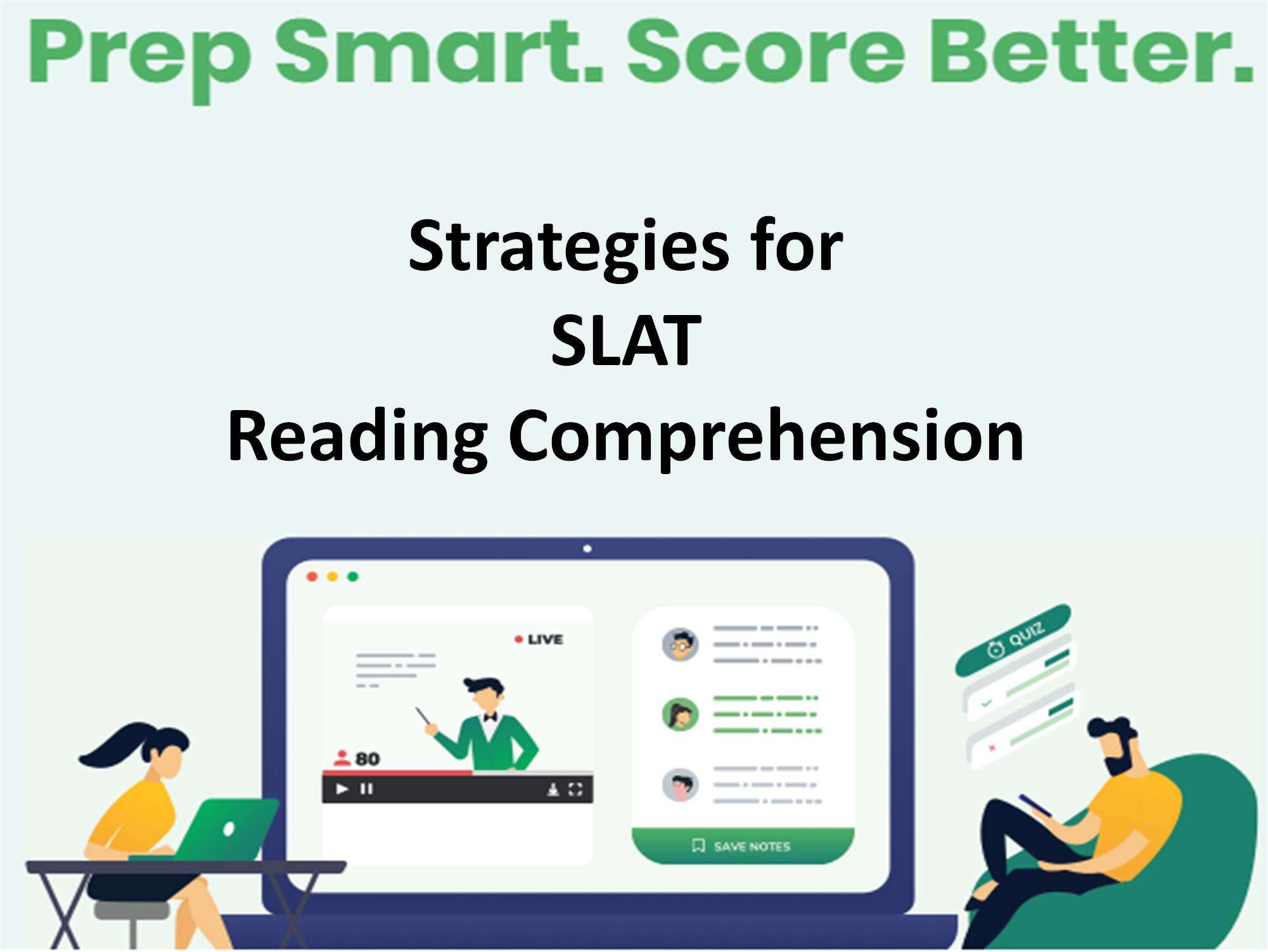How to prepare reading comprehension for the SLAT 2020 exam
SLAT - Symbiosis Law Admissions Test is one of the most prominent law entrance examinations across India. Around 1080 seats are on offer in four campuses and two programs, namely, BALLB and BBA LLB.
Owing to the Covid-19 pandemic, it has been moved online with slot booking dates 14-17 July 2020 and exam dates 26-28 July 2020. Reading Comprehension for SLAT is taken to be amongst the most confusing and demanding sections of the exam. In this blog, we present a full-fledged preparation strategy for SLAT Reading Comprehension. Read on to know more.
SLAT Exam Pattern
Before we delve into how to tackle the SLAT Reading Comprehension questions, here is a brief look at the overall SLAT exam pattern. There are a total of 90 objective-type questions of one mark each with no negative marking. While for the MCQ sections you have a total of 75 minutes, to attempt the Writing Ability Test you will be given an additional 30 minutes. Students must also be informed that there is no fixed SLAT Reading Comprehension syllabus.

Preparation Strategy for SLAT Reading Comprehension
Here are a few highly effective tips to ace the section on Reading Comprehension for SLAT and cover the SLAT Reading Comprehension Syllabus efficiently.
- Be Aware of the Elements of the Passage
In any passage, there are a few elements which constitute its basic structure. These are:
Main Idea or Theme or Subject Matter: Reading comprehension for SLAT passages are based on a fundamental idea, a premise around which the author builds his arguments, presents counter-arguments and so on. While in some passages, this may be crystal clear in the first paragraph itself, in a few cases, you may have to dig in and excavate it from convoluted ideas. As passages can be taken from a variety of fields from literature and sciences to languages and medicine, you must be comfortable in tackling diverse themes.
Author’s Argument: The passage is a literary work by an author who describes a particular topic and presents his orientation. He may or may not agree with the general theme and direction of the passage. Whatever it is, he will present his case with reason and you need to latch on to it.
Conclusion: At the end of the passage, the few lines that close or wrap-up the arguments presented is the conclusion. In most cases, it may contain words such as ‘Overall’, ‘All in all’, ‘therefore’, ‘thus’, ‘however’ amongst others. In many SLAT Reading Comprehension questions, you may come across sub-conclusions. You must observe the effect of such statements in light of the general idea and whether it is the final closing statement or not.
Other Supporting Elements: Apart from the above three, there are other supporting elements on which the passage stands. This may include factual statements, figurative language, visualisation and imagery, biases, etc. Such elements help the passage to better augment its views and present a clearer picture.
- Initial Scanning
Irrespective of the reading approach you choose [mentioned below], it is crucial to perform an initial scanning of the passage to have an idea of what it is about, its structure, main claims and keywords. This will give you a brief idea of what you are dealing with and help you choose which approach to take.
- Reading Approach
There are two major reading approaches practised to answer the SLAT Reading Comprehension questions, namely ‘top-down’ and ‘bottoms up’. While the former stresses on a close reading of the passage first and then attempting the questions, the latter focuses on knowing the questions initially and finding its answer in the passage. Both approaches favour different kinds of students with different strengths and weaknesses. The best preparation strategy for SLAT Reading Comprehension we can give is to practice with approaches and evaluate which one is suitable.
- Trigger Words
Certain words in passages of Reading Comprehension for SLAT are employed to change the direction of the statement, shift opinions or to introduce new information, among other things. Called ‘trigger’ or ‘structural’ words, these are ‘However’, ‘having said that’, ‘conversely’, ‘ yet’, ‘but’, ‘neither…nor’, ‘either….or’, ‘in contrast to…’, etc.
- Do not Apply Prior Knowledge
Refrain from using any prior or outside knowledge you may possess concerning the topic dealt with in the passage or to answer the following SLAT Reading Comprehension questions. Even if you feel that what’s mentioned is incorrect, take it as true.
- Other Tips
Given below are some more suggestions that come in handy to cover the SLAT Reading Comprehension syllabus.
Predict the Answer: Before looking at the choices, it is beneficial to predict or estimate the correct answer according to your understanding of the passage. Think about the question for 5-10 seconds.
Evaluation & Elimination: The most suggested technique is to critically evaluate the mentioned choices, connect them with the information mentioned in the passage and eliminate what may seem to be unreasonable, extreme or unsubstantiated.
Attempt Diverse Passages: As there is no fixed SLAT Reading Comprehension syllabus, attempt passages from as diverse fields as you can. Refer to newspaper articles and editorials from The Hindu or Indian Express, make your questions and answer them in a time-based manner. For instance, ‘what is the main idea of the passage?’ and ‘Do you agree with the author? Give Reason’.
Vocabulary: Nearly 4-7 questions are generally asked from vocabulary including but not limited synonyms, antonyms, one-word substitution, close synonyms & antonyms. Refer to word compilations and try to know the word origin, changes over time. It will help you remember.
In conclusion, the most effective preparation strategy for SLAT Reading Comprehension is to remain calm, composed and in the right frame of mind. Keep feelings of nervousness at bay, remember your strategies and employ a positive outlook. All the best.
To join us on Facebook Click Here and Subscribe to UdaipurTimes Broadcast channels on GoogleNews | Telegram | Signal



